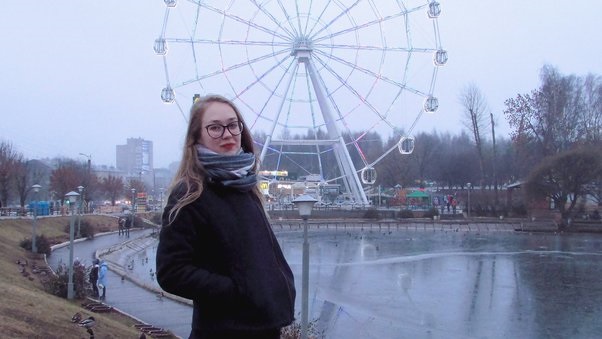Kirov: Historical Legacy and Cultural Heart of Vyatka

Kirov, a city nestled in the heart of the Vyatka region along the banks of the Vyatka River, stands as a testament to Russia’s historical heritage, cultural diversity, and natural beauty. As the administrative center of Kirov Oblast, the city has evolved from a medieval outpost into a modern urban center that blends traditional Russian charm with vibrant community life, economic dynamism, and educational excellence.
Geography and Climate
Kirov is located in the European part of Russia, approximately 900 kilometers northeast of Moscow. The city’s geographical location on the Vyatka River and its proximity to the Urals contribute to its scenic landscape of forests, rivers, and rolling hills. Kirov experiences a temperate continental climate, with cold winters and warm summers, influenced by its inland location far from maritime influences.
History and Cultural Heritage
Founded in 1374 as the fortress of Khlynov, Kirov has a rich history shaped by its strategic location on trade routes between Moscow, Siberia, and the Volga region. The city played a pivotal role in defending Russia’s eastern borders and facilitating trade with neighboring regions. Throughout its history, Kirov has been known by various names, including Vyatka and Khlynov, before being renamed in honor of the Soviet leader Sergey Kirov in 1934.
Kirov’s cultural heritage is reflected in its architectural landmarks, including churches, cathedrals, and historical buildings that showcase a blend of Russian Orthodox, Soviet, and modern architectural styles. The Spasskaya Tower, part of the former Vyatka Kremlin, and the Alexander Garden are prominent historical sites that offer insights into Kirov’s past and architectural evolution.
Cultural Diversity and Community Life
Kirov is home to a diverse population, including Russians, Tatars, Mari, and other ethnic groups, reflecting its role as a cultural melting pot in the Vyatka region. The city’s cultural life thrives with theaters, museums, art galleries, and cultural centers that showcase local talent and historical artifacts. Annual events such as the Kirov City Day and the Vyatka Crafts Festival celebrate traditional music, dance, and craftsmanship, fostering community spirit and cultural exchange.
Landmarks and Attractions
Kirov boasts several architectural landmarks and cultural attractions that highlight its historical and artistic significance. The Kirov Drama Theater, with its neoclassical facade and rich theatrical tradition, is a center for performing arts and cultural events. The Kirov Regional Museum of Local Lore houses exhibits on archaeology, ethnography, and regional history, offering insights into Kirov’s past and cultural evolution.
The Vyatka River embankment provides a scenic setting for leisure activities, with parks, promenades, and recreational facilities attracting residents and visitors alike. Nearby, the Kirov Botanical Garden and Park offers botanical diversity and outdoor recreation opportunities, showcasing Kirov’s natural beauty and ecological conservation efforts.
Economic Hub
Kirov is a significant economic and industrial center in the Vyatka region, with manufacturing, forestry, agriculture, and services driving its economy. The city’s industries produce machinery, textiles, food products, and consumer goods, contributing to regional economic growth and employment. Kirov’s strategic location on major transportation routes, including railways and highways, facilitates the transportation of goods to domestic and international markets, supporting trade and commerce.
Education and Innovation
Kirov is home to several educational institutions, including Vyatka State University and branches of leading Russian universities, fostering academic research, innovation, and skills development. These institutions collaborate with local industries to promote technological advancement and entrepreneurship, supporting Kirov’s transition to a knowledge-based economy.
Urban Development and Sustainability
In recent years, Kirov has undergone urban development projects aimed at improving infrastructure, enhancing quality of life, and promoting environmental sustainability. Efforts to modernize housing, transport, and public amenities have transformed the cityscape, while initiatives focusing on environmental protection, energy efficiency, and waste management aim to create a sustainable and resilient urban environment for future generations.
Challenges and Future Prospects
Kirov faces challenges such as urbanization, environmental sustainability, and socio-economic disparities, which require coordinated efforts from government, industry, and civil society to address. Initiatives focusing on sustainable development, social welfare, and community engagement aim to create inclusive growth and improve the well-being of all residents.
Conclusion
Kirov, with its historical legacy, cultural diversity, and economic vitality, stands as a dynamic city in the Vyatka region and Russia. From its origins as a medieval fortress to its role as a center of culture, commerce, and community life, Kirov continues to evolve while preserving its traditions and embracing modernity. As it navigates the challenges and opportunities of the 21st century, Kirov remains a symbol of resilience, creativity, and progress in Russia’s diverse and dynamic urban landscape.




